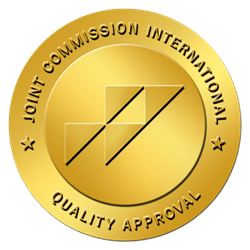When looking at amphetamine vs methamphetamine, it is all too easy to mistake these substances as being the same things. After all, the word ‘amphetamine’ is present in both. However, while their names may suggest a close relation, there are several differences between these two substances.
While these drugs do share the fact that they are both stimulants, they still have considerable differences in their risk for addiction and the side effects that come with chronic abuse. Being aware of these differences can help you keep yourself and your loved ones safe from their spreading influence.
As both amphetamines and methamphetamine become more accessible throughout the nation, it is important to be aware of how these drugs compare to one another and the potential side effects that come with their usage.
What Are Amphetamines?
Amphetamine salts were first discovered over 100 years ago and were available to use for a wide variety of issues. However, as their popularity increased, so too did concerns over the adverse effects these stimulants presented with long-term use.
Today, amphetamines are highly regulated and only available through a prescription. These synthetic stimulant drugs are primarily used to treat ADHD and narcolepsy by increasing dopamine and norepinephrine levels in the brain. A list of amphetamines that are commonly prescribed in the U.S. include:
- Adderall
- Ritalin
- Dexedrine
- Vyvanse
Unfortunately, these drugs are also often sought out for non-medical purposes. Many high school and college students misuse amphetamines in the hopes that the stimulants will increase their academic performance and concentration levels.
However, there is no evidence suggesting that amphetamines can provide this sort of improvement. In fact, with long-term heavy amphetamine use, these stimulants can cause serious alterations to the brain’s neural pathways and chemical makeup. This is why it is important to only use these drugs as prescribed and never recreationally.
What Is Methamphetamine?
Methamphetamine is a powerful, highly addictive stimulant that, like amphetamine, affects the central nervous system. More commonly known as meth, ice, and other nicknames, this drug increases the amount of dopamine in the brain, which is involved in movement, motivation, and reinforcement of rewarding behaviors.
Currently, methamphetamine is classified as a Schedule II stimulant under the Controlled Substances Act. This means the drug poses a high risk for abuse but maintains an accepted medical use. The only legal form of methamphetamine is the medication Desoyxn, which is available only by prescription that is not refillable.
This drug can lead to feelings of euphoria, increased energy, and decreased appetite. Because of its effects, many people begin abusing this drug due to its ability to provide short-lasting pleasure, while others may misuse methamphetamine to lose weight.
Unfortunately, abusing this drug can have serious implications for the user’s physical and mental health. Some of the most common methamphetamine side effects that can occur from abusing this drug include:
- Aggressive and violent behavior
- Anxiety and paranoia
- Psychosis
- Visual and auditory hallucinations
- Mood swings
- Heart disease
- Brain damage
Many people who abuse this drug do not realize that methamphetamine is highly addictive and even short-term use can lead to dependence. By the time they realize the grip this drug has taken, they have already become trapped in the destructive cycle of addiction.
Amphetamine vs Methamphetamine
As we have discussed, amphetamines and methamphetamine are not the same. While they are both stimulant drugs, they have different chemical structures and effects on the body, particularly when used over long periods of time.
In terms of chemical structure, amphetamine is similar to dopamine, while methamphetamine has a methyl group added to its structure. This means that its stimulative and euphoric effects are much stronger than those experienced by amphetamines, leading to a much faster and stronger dependence.
While both drugs are classified as Schedule II substances, methamphetamine can have much more severe consequences for its use and possession, both legally and physiologically. Despite methamphetamine’s increasing availability, the medical acceptance of amphetamines seems to make these the preferred option for misuse within the U.S.
According to the U.S. National Center for Drug Abuse Statistics (NCDAS):
- In 2018, 1.8 million US citizens reported meth use in the past year.
- In 2018, 5.5 million US citizens reported using cocaine in the past year.
- Nearly 1 in 5 drug overdose deaths in 2017 were related to cocaine
- From 2012 to 2018, cocaine overdose deaths increased from 1.4% to 4.5%.
As these numbers continue to increase, it is important to be aware of the risks these substances pose and how you can keep yourself and your loved ones safe.
Signs and Symptoms of Stimulant Abuse
As you can see, methamphetamine is a more potent and addictive form of amphetamine. It is also more dangerous, as it can cause serious health problems, such as heart disease, psychosis, and death. With that being said, both substances can pose a significant risk to your well-being, especially if dependence has formed on them.
If you believe that you or a loved one is struggling with stimulant abuse, it is important to be aware of the signs and symptoms associated with this condition. Some of the most common warning signs of a stimulant addiction include:
- Changes in behavior, such as becoming more aggressive, impulsive, or risky. This can also include withdrawal from social activities and becoming secretive about drug use.
- Physical symptoms, such as weight loss, insomnia, and anxiety, as well as changes in appetite, blood pressure, and heart rate.
- Developing a tolerance, such as needing to take more of the drug to achieve the same effects as before.
- Developing withdrawal symptoms when no longer using the drug, such as fatigue, depression, and anxiety.
If you recognize any of the signs above in yourself or a loved one, it is vital to keep in mind that help is available. Facing an addiction can be a difficult thing to do, but with the proper treatment and support, recovery is possible.
Stimulant Addiction Treatment at Royal Life Centers
Stimulant addiction is a serious problem that can have a devastating impact on your life, as well as the people around you. Fortunately, there is help available. Stimulant addiction treatment can help you overcome your addiction and regain control of your life.
If you or a loved one is struggling with stimulant abuse and are ready to start treatment, Royal Life Centers offers the comprehensive care you need for a safe and successful recovery. Our extensive treatment programs include:
- Medical Detox
- Residential Inpatient Program
- Partial Hospitalization Program (PHP)
- Intensive Outpatient Program (IOP)
- Outpatient Program
- Sober Living Residences
Our facility also offers an extensive variety of evidence-based therapies and holistic treatments to make sure you receive the well-rounded, whole-health care you deserve. If you are ready to start leading a better life, you can reach out to us today to learn more about how our program can be a great fit for you.














